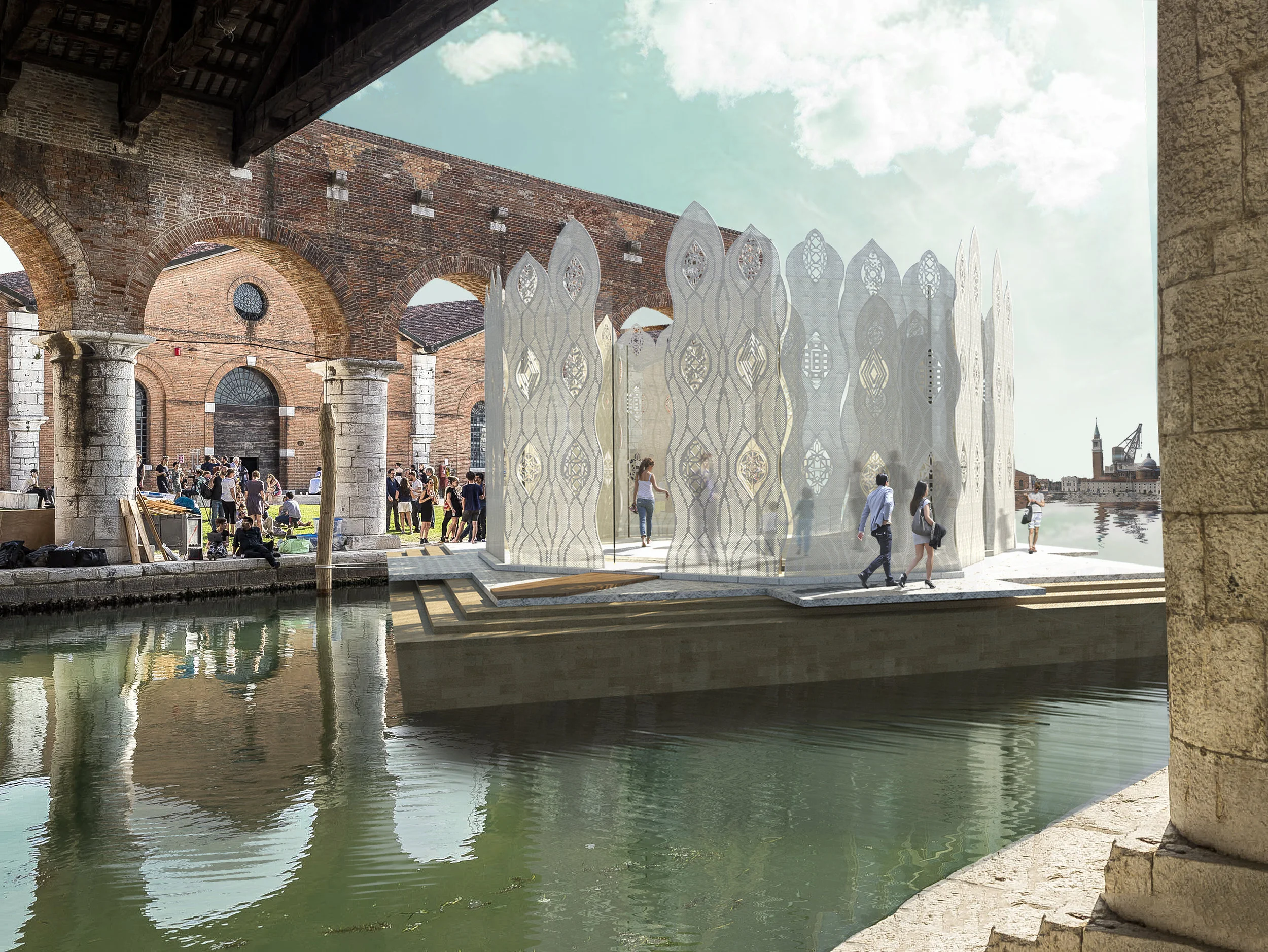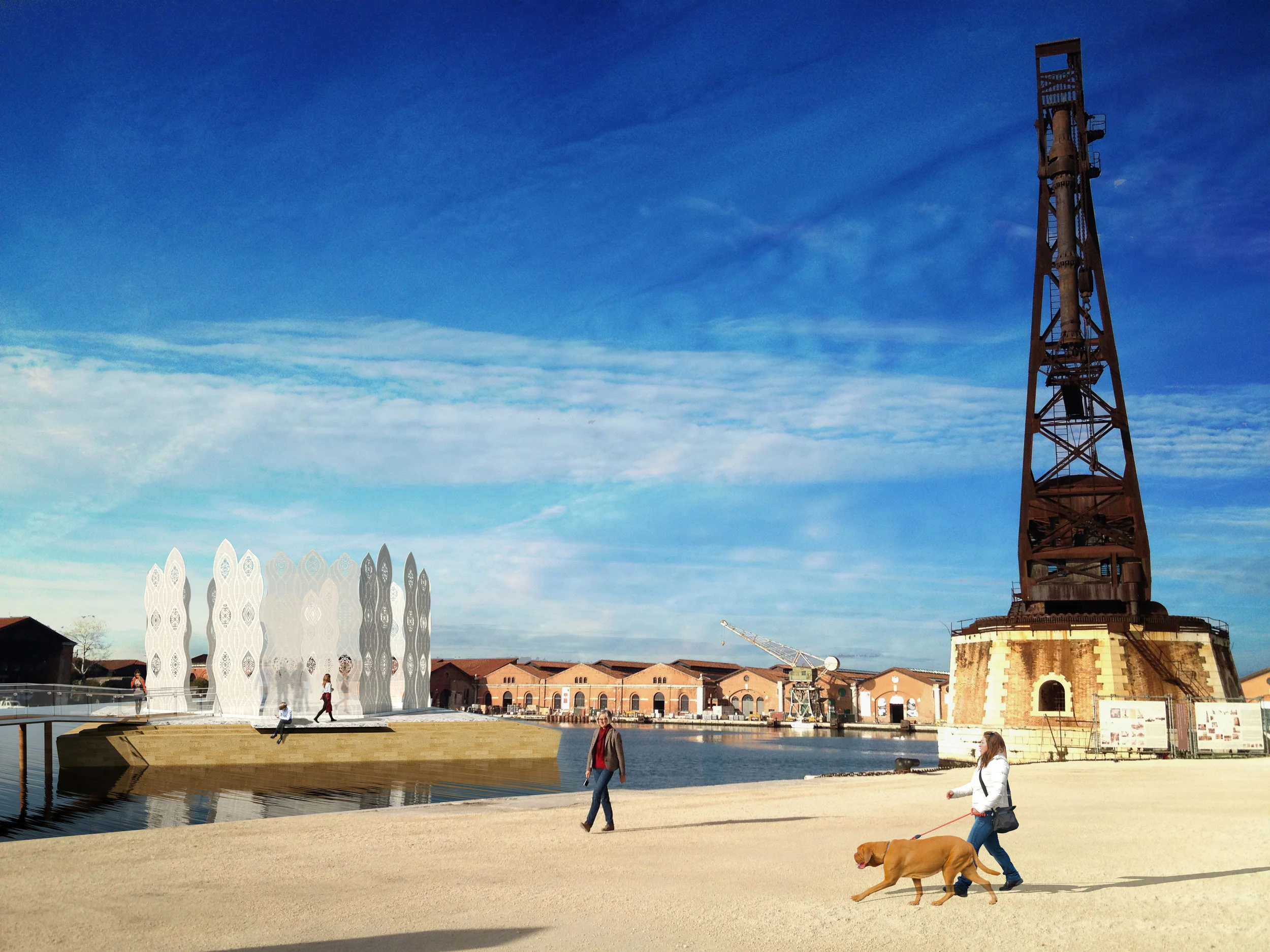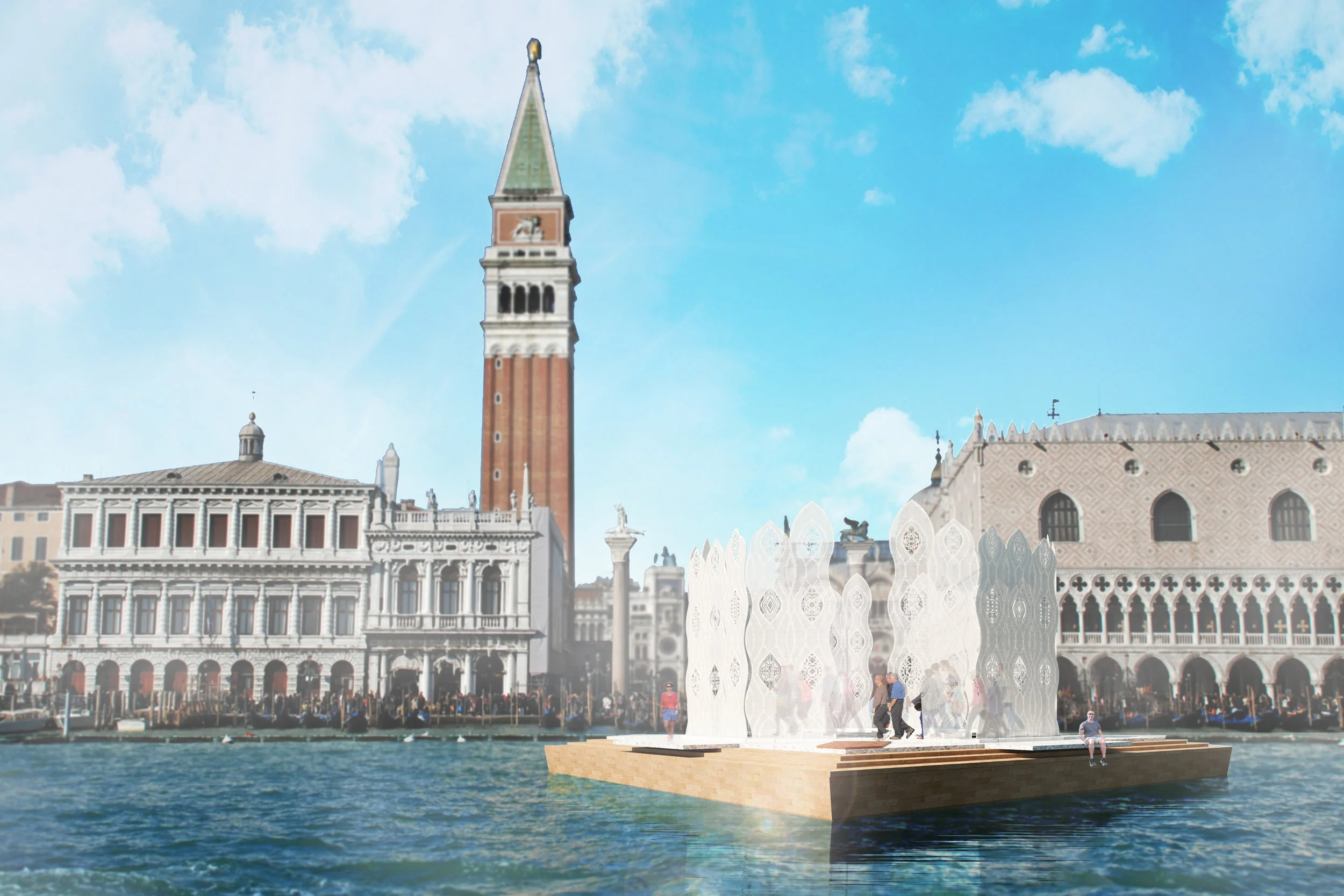teatro burano
la biennale di venezia
Academic - Fall 2012
Part of the Venice Biennale exposition each year incorporates a floating theater design. Inspired by the work of Aldo Rossi and his ‘Teatro del Mondo’ this has now become a more regular component of the central bay located in the Arsenale. The design for ‘Teatro Burano’ is inspired by the history of the city floating around it. This world event hosts a theater component in the area which was once the largest pre-industrial production centre in the world. It is very important to Venice because the Serenissima fleet was built there. These shipyards depots and workshops were the symbol of the military, economic, and political power of 14th century Venice.
lace
Teatro Burano offers a stark contrast to it's industrial environment. It’s walls are inspired by the delicate venetian lace that made Venice the center of fashion for the courts of Europe in the middle ages. Its intricate mold serves as the perfect translucent skin for this floating theater design.
LOCATION MAP
contrast
Breezes can still pass through the space, bystandards can still catch a glimpse of the show, and the audience can still make out the contrasting industrial facades lining the bay.
PART OF THE PROCESS
Though resources were limited in Rome (where this project was designed), physical models made out of medium weight paper helped determine the proportion and height of the screens.
history
The intricate geometric pattern of the screens beckons imagery of the ornate details on the civic architecture through out Venice, especially the Doge Palace in St. Mark's Square.
pattern
The driving design principle for the grid system we applied to the screen came from multiple studies of the inticate Venetian lace pointillism
movie
Through the screens one can make out from along the canal, the iconic scene from the movie "La Dolce Vita" by Federico Fellini.






